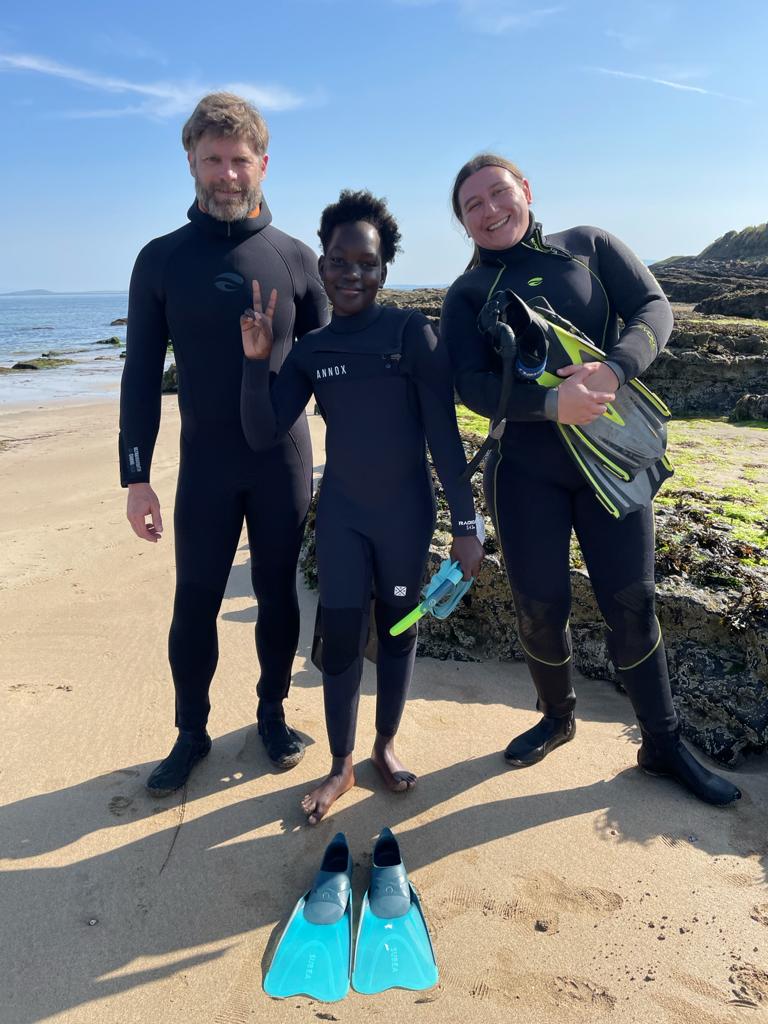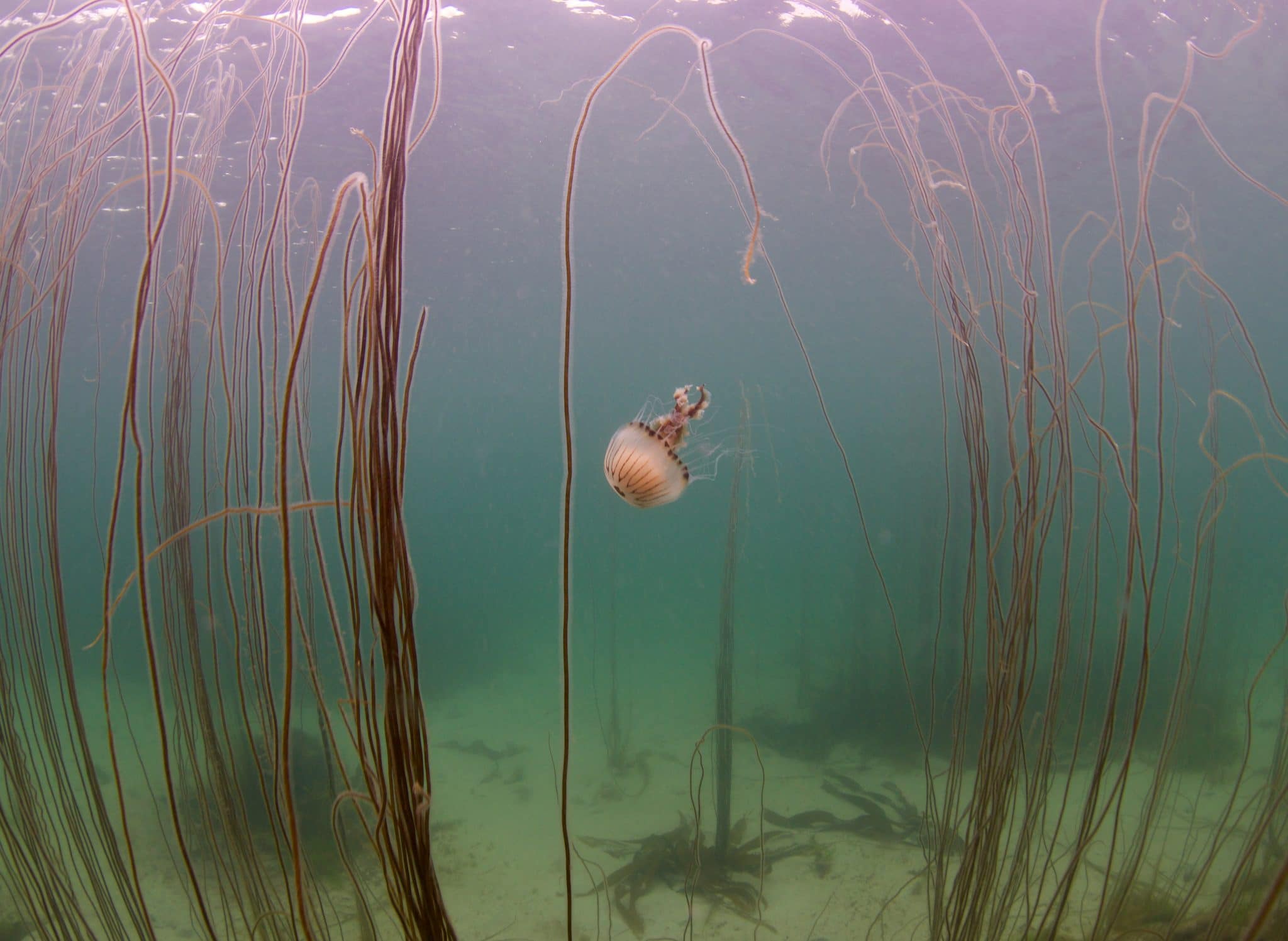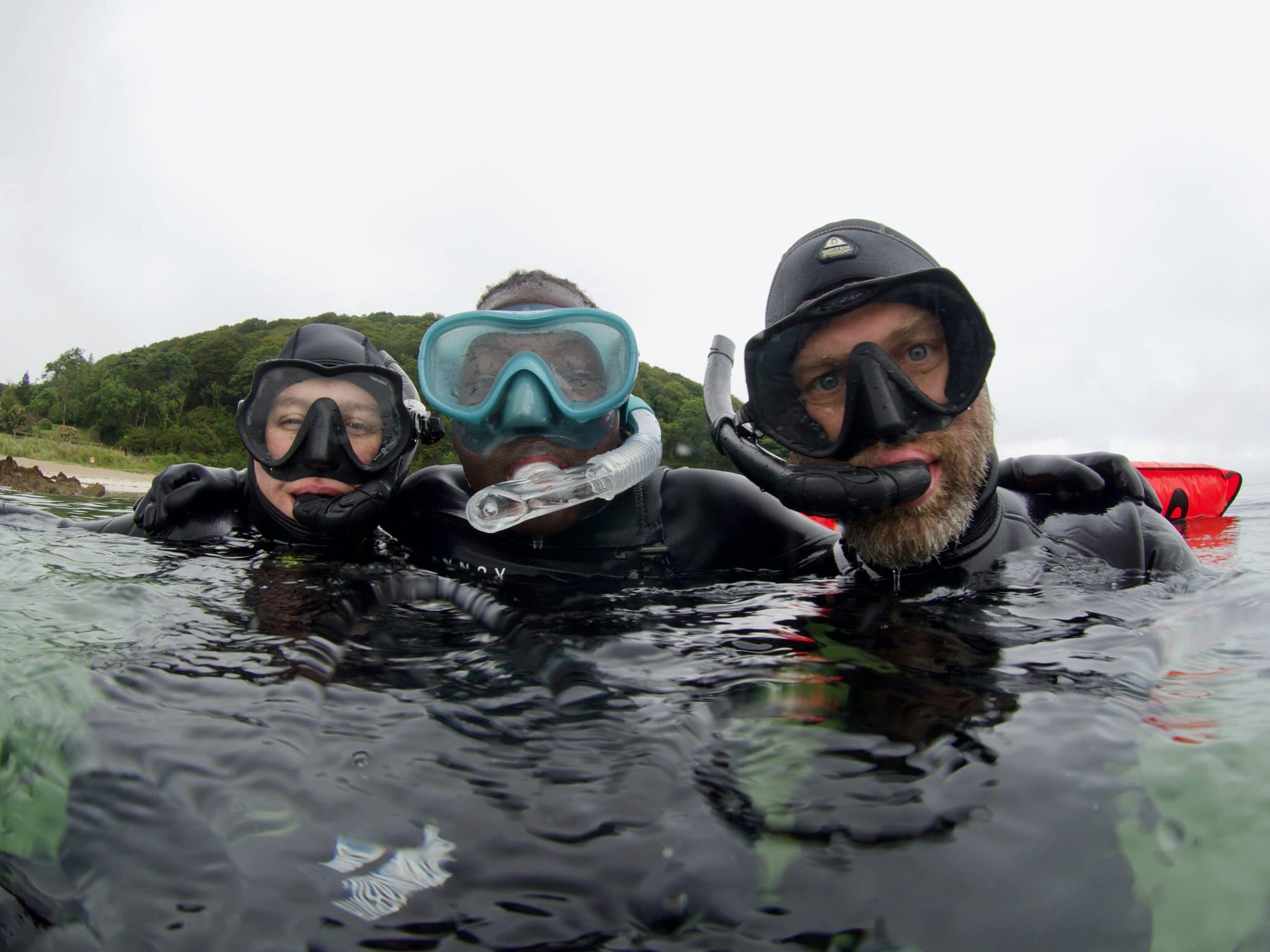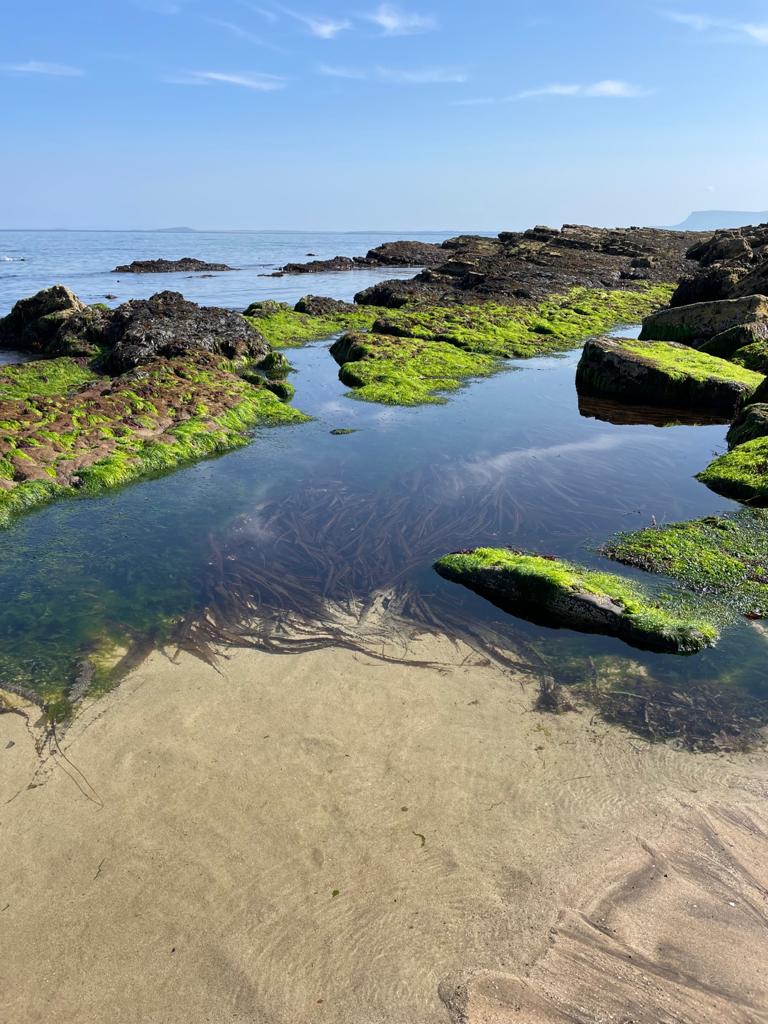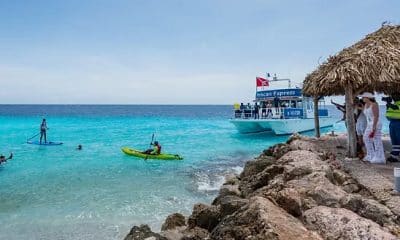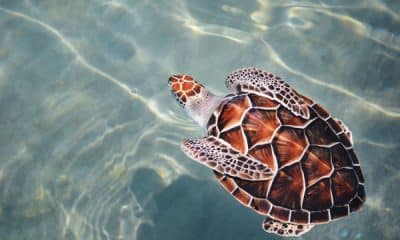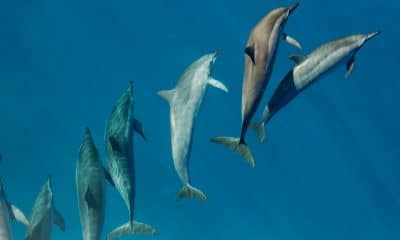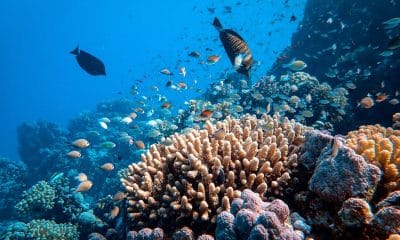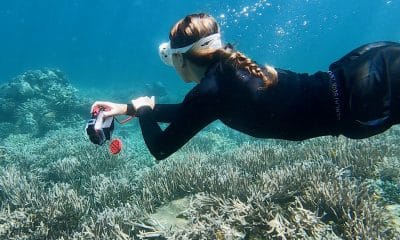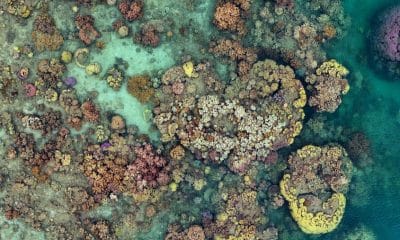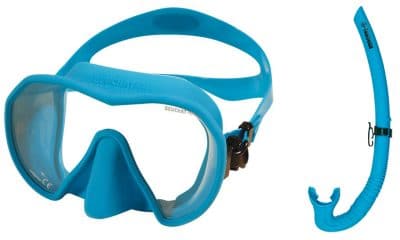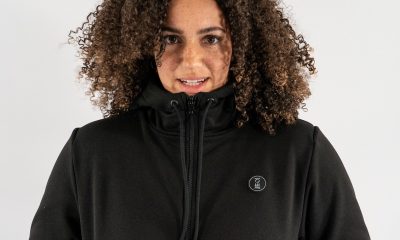Blogs
First Time Family Snorkel in Ireland
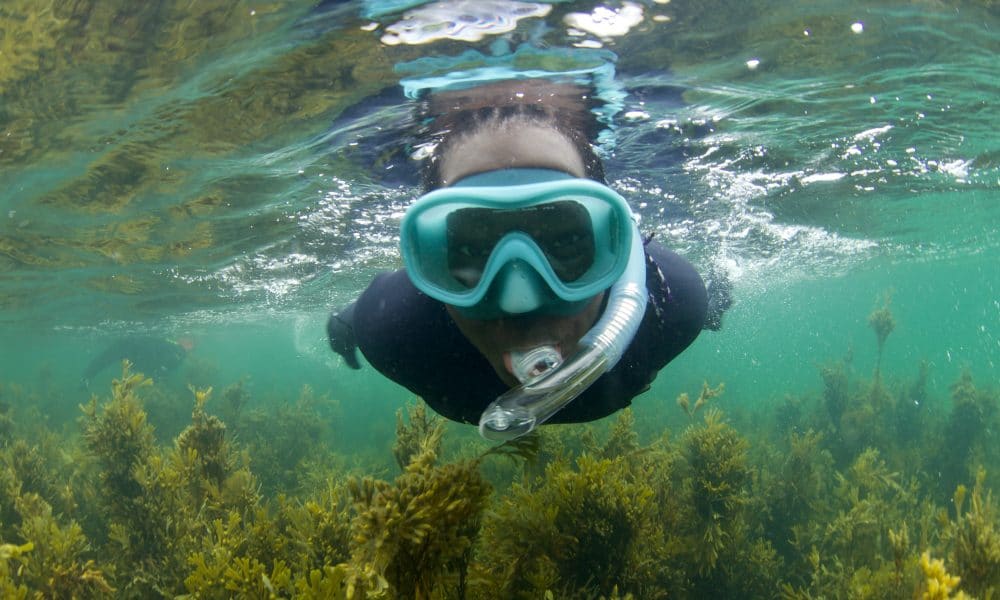
This summer Mike and I were fortunate enough to have some family visiting, including our niece Norah, after not seeing each other since pre-pandemic times. We were lucky to get some lovely weather and of course that meant heading to the coast!
Our niece is a good swimmer and would like to learn to scuba dive one day. We mentioned that snorkeling was a really good start for getting used to using a mask and fins and also great fun. Having gotten her equipment for the trip, Norah practised in the pool before her arrival and was excited to try things out in the ocean.
We live within a 90 minute drive of several lovely bits of shoreline on the west coast of Ireland, and chose to start off our adventures at Dunmoran Strand in County Sligo. Here there is a sandy beach bordered by rocky shore, with shallow calm waters. A great starting point for snorkeling in the sea for the first time! Norah kitted up remarkably quickly as I struggled into my wetsuit, but we were soon in the shallows ready to go. We had an initial swim to get a feel of it and then gave Norah some tips on clearing her mask, snorkel and some finning techniques and we were off exploring the rocks. Almost immediately we came across some large colourful jellyfish and swam carefully around to observe them without any contact. After a good 45 minutes of seeing wrasse, crabs, sand eels and anemones we returned to the beach to dry off and warm up with huge smiles.
A few days later we headed out to the tidal swimming pool at Rosses Point, near Sligo. Here by the yacht club is a man-made pool that opens out into the sea. From the pool you can follow the coast and snorkel the rocks to the right side with an easy entry and exit at the pool. Care must be taken NOT to swim out of the pool to the left, as the aptly named “Dead Man’s Point” has some fierce currents. Arriving on a cooler, breezy day, we checked Norah was up for the challenge of snorkeling in a slight swell and we headed out right along the rocks. Norah coped brilliantly with the slightly tougher conditions and was soon zooming around spotting crabs all over the place. We even got to see a small dogfish dart out from between the rocks and out into the kelp. We took care to watch the waves and make sure we turned round early to get back to the tidal pool before we got chilled or tired and spent a happy last few minutes jumping off the poolside at the deep end before heading home.
For our last trip we went to Old Head Beach in County Mayo, which has a Blueway Snorkel Trail. As depicted on an informative sign by the car park, the trail starts from the left side of the pier, following a rocky coastline in sheltered, shallow water away from local boat traffic. On our visit the sun was out again and the waters were an inviting, almost tropical blue. As we swam around and through the thick kelp we spotted plenty of wrasse, a couple of large compass jellyfish, a pipe fish and a flying gurnard. Norah perfected her duck diving and we had an enjoyable time dropping our snorkels for her to retrieve from the sandy bottom.
We had some excellent snorkels and though sadly the family had to return home, it was a great visit.
After our adventures, we asked Norah a few questions to get her perspective:
What was your favourite thing?
Snorkeling with jellyfish and not getting stung!
What was the biggest challenge?
The salt stinging my eyes when the mask leaked a bit.
Where was your favourite snorkel spot?
Old Head had the most colourful water, Rosses Point had lots of crabs and we saw a tiny shark!
What new skill did you learn that you found most useful?
Putting toothpaste on a new mask to stop it fogging up.
What are you most proud of?
Snorkeling in the ocean for the first time and coping with waves and some current.
Do you want to go snorkeling again?
Yes!
Mike and I love the water and to be able to share this activity with our niece was brilliant. Ireland has a great system of established snorkel trails called The Blueway (https://diving.ie/blueway/). These Blueway trails can be snorkeled or kayaked and are safe routes with maps and above water signage on the points of interest. The west coast of Ireland really is a great place for some snorkel adventures!
For more information on water activities in Ireland check out: www.discoverireland.
Blogs
The Suit Ocean Team leads the Ultimate Curacao Snorkeling Adventure
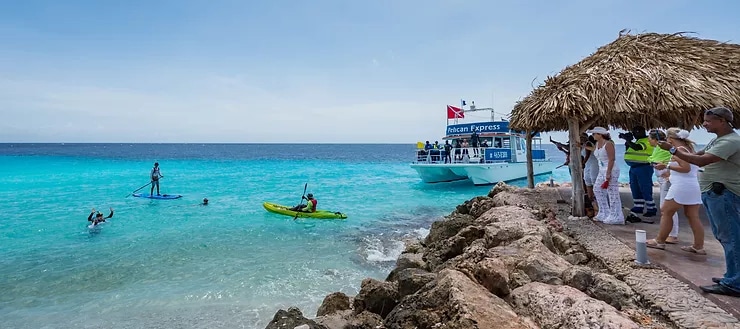
As passionate residents of our Dutch Caribbean Island, we must congratulate The Suit Ocean Team for creating more awareness about the importance of protecting our beautiful fringing reef systems in Curacao.
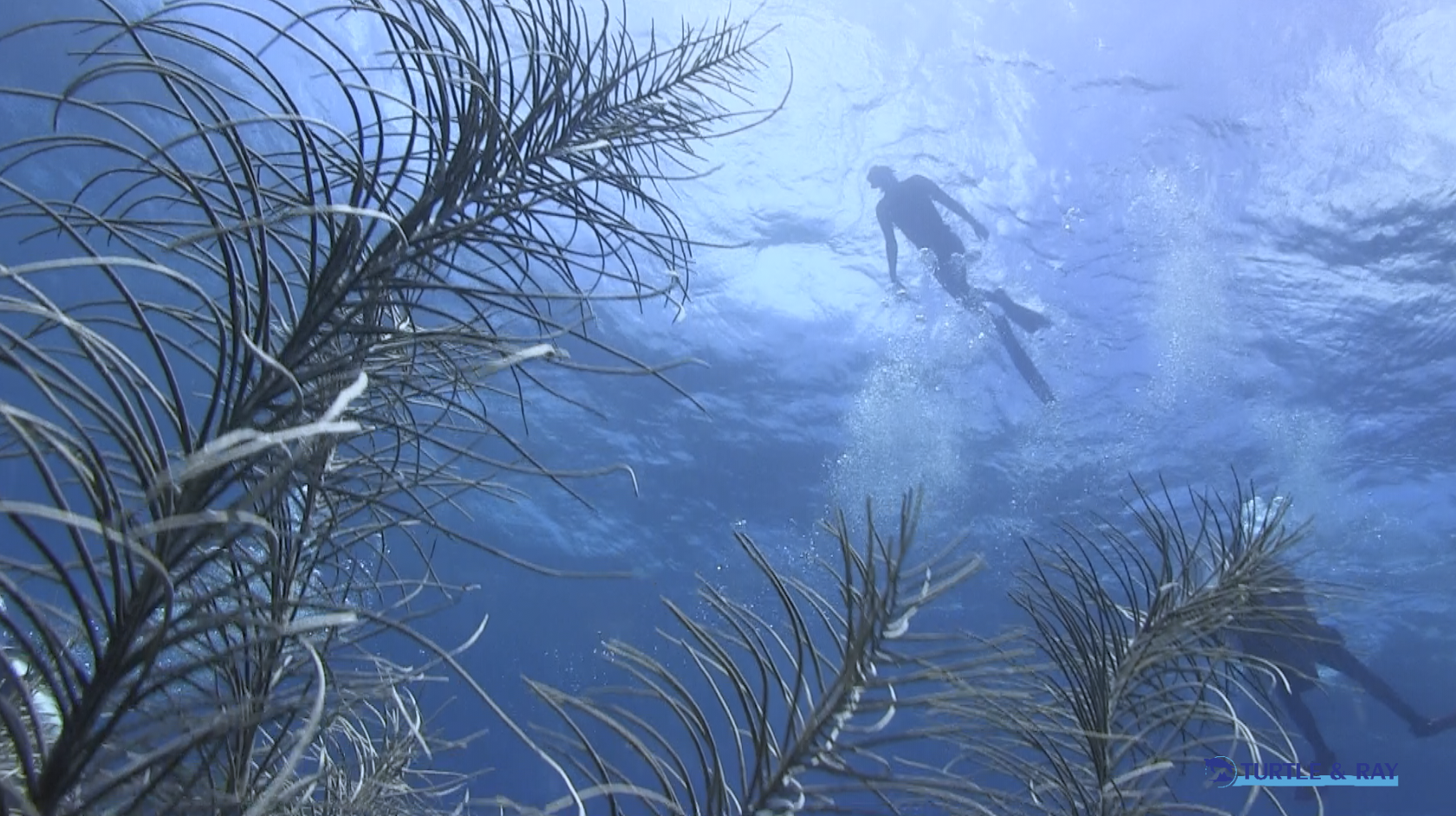
The film, Curacao Underwater Kunuku (Kunuku is Papiamento for Garden), not only documents this ultimate snorkeling adventure showing you how easy it is for everyone to access and enjoy a snorkel or diving experience, but it also showcases the interaction between man and nature, highlighting the beauty of underwater life while promoting conservation, preservation and the need to protect these vital habitats.
These are the key ingredients to this beautiful short film documentary. Watch NOW and please enjoy our “CURACAO UNDERWATER KUNUKU”.
This film, produced by the Lawrence Mensa Foundation (LMF), is also available in multiple languages including: Spanish, Papiamentu, Dutch, Portuguese and German.
Blogs
8 Unique Places to Go Snorkeling in Europe
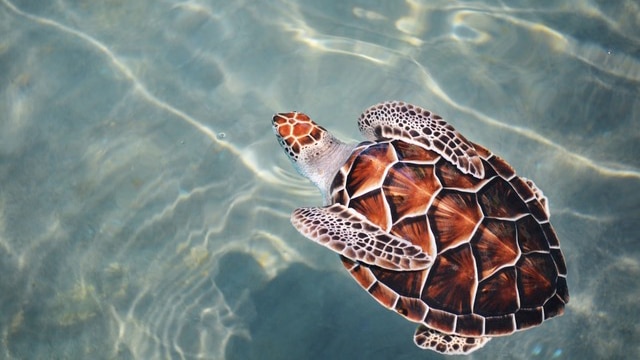
Snorkeling in Europe brings to mind golden sands dotted with beach umbrellas, clear waters, and rocky landscapes busy with Mediterranean fish life. Europe offers all of that, but it also offers so much more for snorkelers. Among Europe’s diverse countries, you can find impossibly bright blue lagoons, idyllic islands, and pristine marine reserves that host thousands of sea turtles and playful seals. You can snorkel over a sunken Roman city and explore one of the world’s premier marine megafauna hotspots. Ready for a summer vacation? Get inspired with our round-up of 8 unique places to go snorkeling in Europe.
Comino, Malta
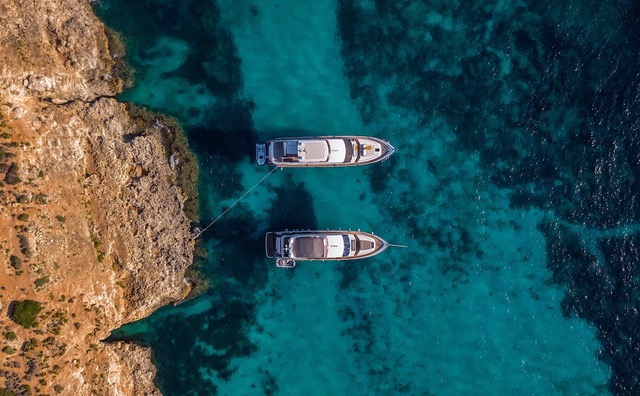
Sitting between the islands of Malta and Gozo, Comino Island is a paradise for snorkelers and divers alike. This tiny island hosts the brightest blue waters in the Maltese Islands and offers fantastic snorkeling among sheltered inlets and caves busy with diverse marine life.
Comino is best-known for hosting the Blue Lagoon; a bucket-list destination with crystal-clear waters and striking rocky landscapes. It is the perfect place to go snorkeling, take a hike, or simply marvel at the gorgeous scenery.
Medes Islands, Spain.
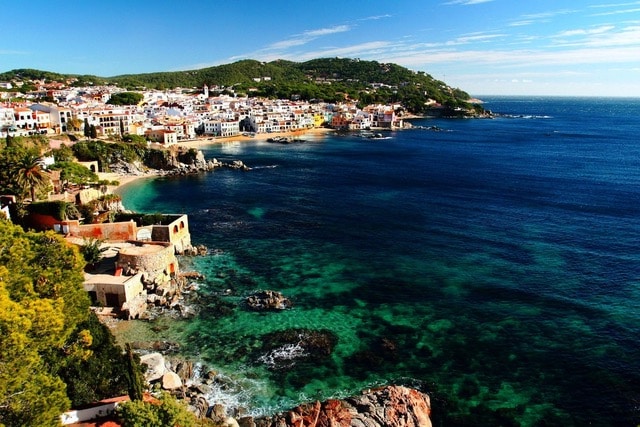
With over 500 dive sites and seaside destinations all along its coastline, Spain draws tourists from around the world. This vibrant country is one of Europe’s top vacation spots.
The Costa Brava in northeastern Spain is home to some of the most famous snorkeling spots in the country, one of which is the Medes Islands. This small archipelago of seven islets off L’Estartit is one of the best marine reserves in all of the Mediterranean.
Fishing was banned at the Medes Islands over 30 years ago, which has allowed marine life to flourish there. Seagrass meadows and rocky areas busy with fish await. A visit to this exceptional marine ecosystem is a must if you are visiting Spain.
Zakynthos, Greece.
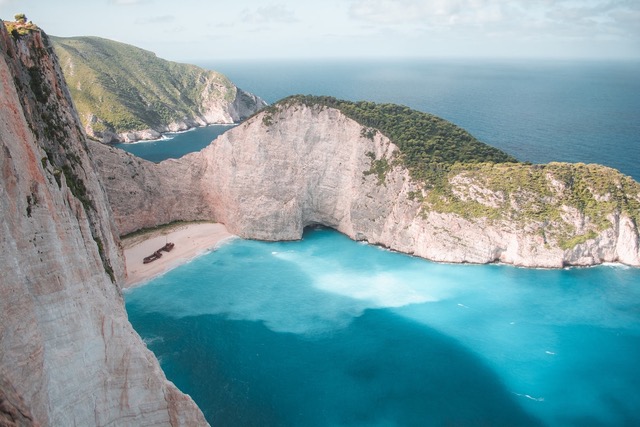
If you love sea turtles, Greece should be top of your list of places to go snorkeling in Europe.
Zakynthos is home to Marathonisi Island, also known as ‘Turtle Island’. This small island sits within the National Marine Park of Zakynthos and is a vital breeding ground for loggerhead sea turtles. The National Marine Park of Zakynthos was created in 1999 to protect these turtles, plus rare Mediterranean monk seals, which give birth to their young in Zakynthos’s secluded caves.
Marathonisi, nearby Cameo Island, and Zakynthos, are the top places in Europe to swim with turtles. In the summer months, thousands of loggerhead turtles visit the area to lay their eggs and you can go snorkeling with them.
Lundy Island, United Kingdom.
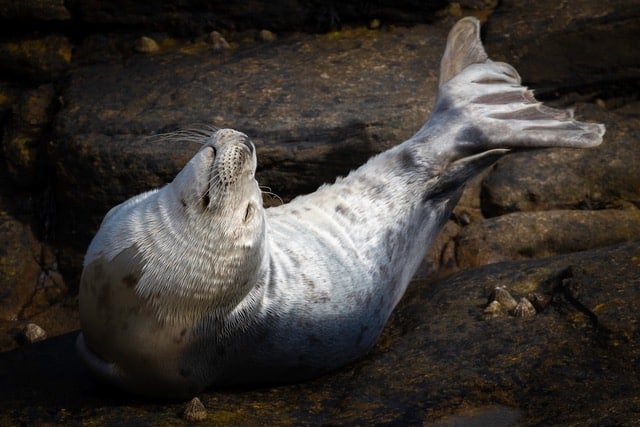
Snorkeling with seals is bound to leave a smile on your face. These cheeky animals are known for getting up close to snorkelers, checking them out, and occasionally nibbling fins.
Lundy Island is one of the best places to go snorkeling with seals in Europe. This island sits just 12 miles off the coast of Devon and hosts a breeding colony of Atlantic grey seals. The seals can be found playing in the surf and lounging in the sunshine at various points around the island.
Grab your snorkeling kit and dive in. Below the water, you will find shallow sunlit kelp forests, a variety of reefs, sea caves, and pinnacles. Lundy is a popular place for diving, but you will see plenty of marine life from the surface, including bright cup corals, anemones, fish, and hopefully seals.
Sunken City of Baiae, Italy
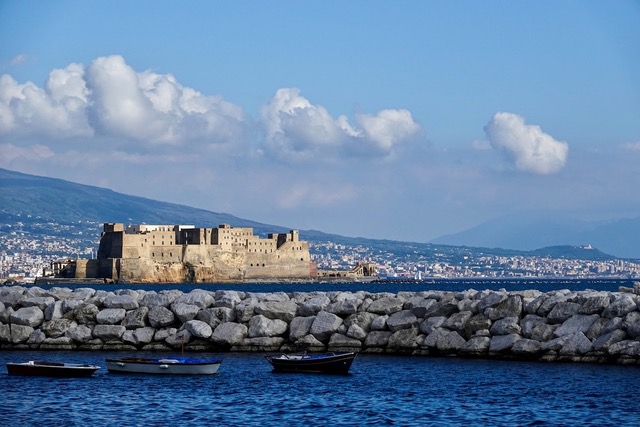
Not every great snorkeling experience is about marine life. In Italy, you can snorkel over ancient Roman ruins.
Two thousand years ago, Baiae was the destination for rich Romans to escape the city and relax by the seaside. Countless emperors and merchants flocked to Baiae’s shores every year, until tectonic activity forced this thriving city underwater.
Today, Baiae is an intact underwater city and one of the top highlights of snorkeling and diving in Italy. Observing these ruins is a breath-taking experience that brings history to life. There are Roman statues, a thermal spa, paved roads, and pillars dating back to the 1st century BC.
Corsica, France
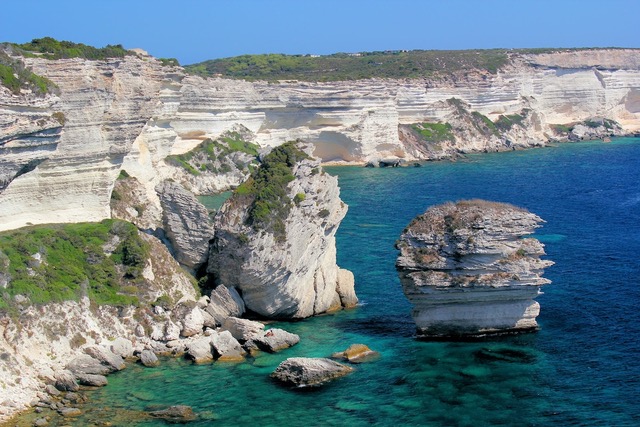
Corsica is renowned for its crystal-clear waters and shallow bays perfect for snorkeling with your kids.
This gorgeous island in the Mediterranean Sea boasts dramatic cliffs and white-sand beaches that hosts a wealth of accessible snorkeling spots. There are rich seagrass beds and rocky landscapes, plus small hidden coves dotted around the island. All of which host a diverse array of marine life, including huge schools of fish, octopi, moray eels, and starfish.
Corsica’s calm waters make it ideal not just for kids, but also for beginner snorkelers and those who want an easy time in the water. With water temperatures reaching up to 26 °C, plus water visibility of up to 30 meters, Corsica ticks the boxes for a laidback beach and snorkeling vacation.
Traun River, Austria
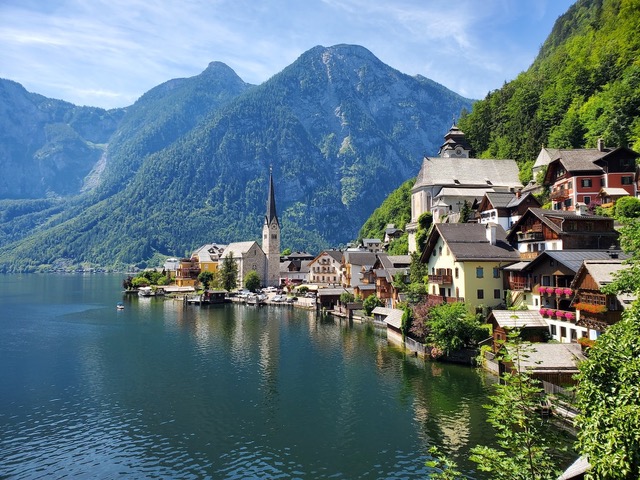
You might not think of Austria for snorkeling, but this land of iconic mountains and lush green landscapes has pristine lakes that attract divers and snorkelers every year. Away from the lakes, you can go snorkeling in spring-fed rivers that gleam in the sunshine.
Forget about floating on the surface when you go river snorkeling. At the Traun River in Upper Austria, river snorkeling involves rock jumping, canyoning, and some relaxed floating downstream. Along the way, you can explore interesting rock formations, underwater caves, and a waterfall, and meet freshwater fish life. This is also an excellent spot to go drift diving.
The Azores, Portugal
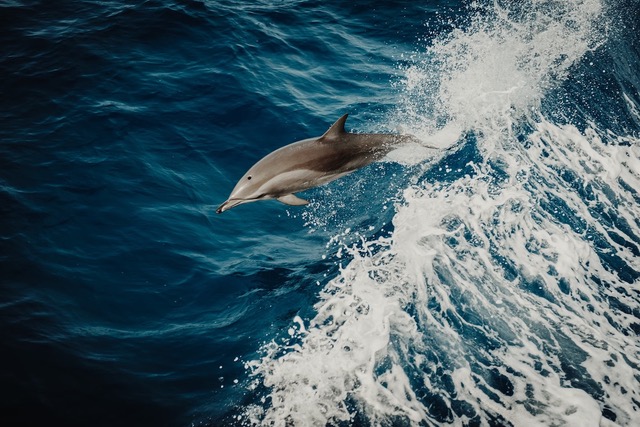
Sitting in the middle of the Atlantic Ocean and surrounded by endless blue waters, the Azores is a mecca for marine megafauna.
These famous islands host a remarkable amount of marine life, including more than 27 whale and dolphin species, mobula rays, and sharks. Snorkeling at the Azores is a great way to experience this wealth of life. You can swim with dolphins and snorkel among dozens of mobula rays and big pelagic fish.
And if you have a scuba certification, you can also go diving with mako and blue sharks. With water visibility reaching up to 60 meters, the Azores is incredible whichever way you choose to explore.
Kathryn Curzon, a conservationist and dive travel writer for SSI (Scuba Schools International), wrote this article.


